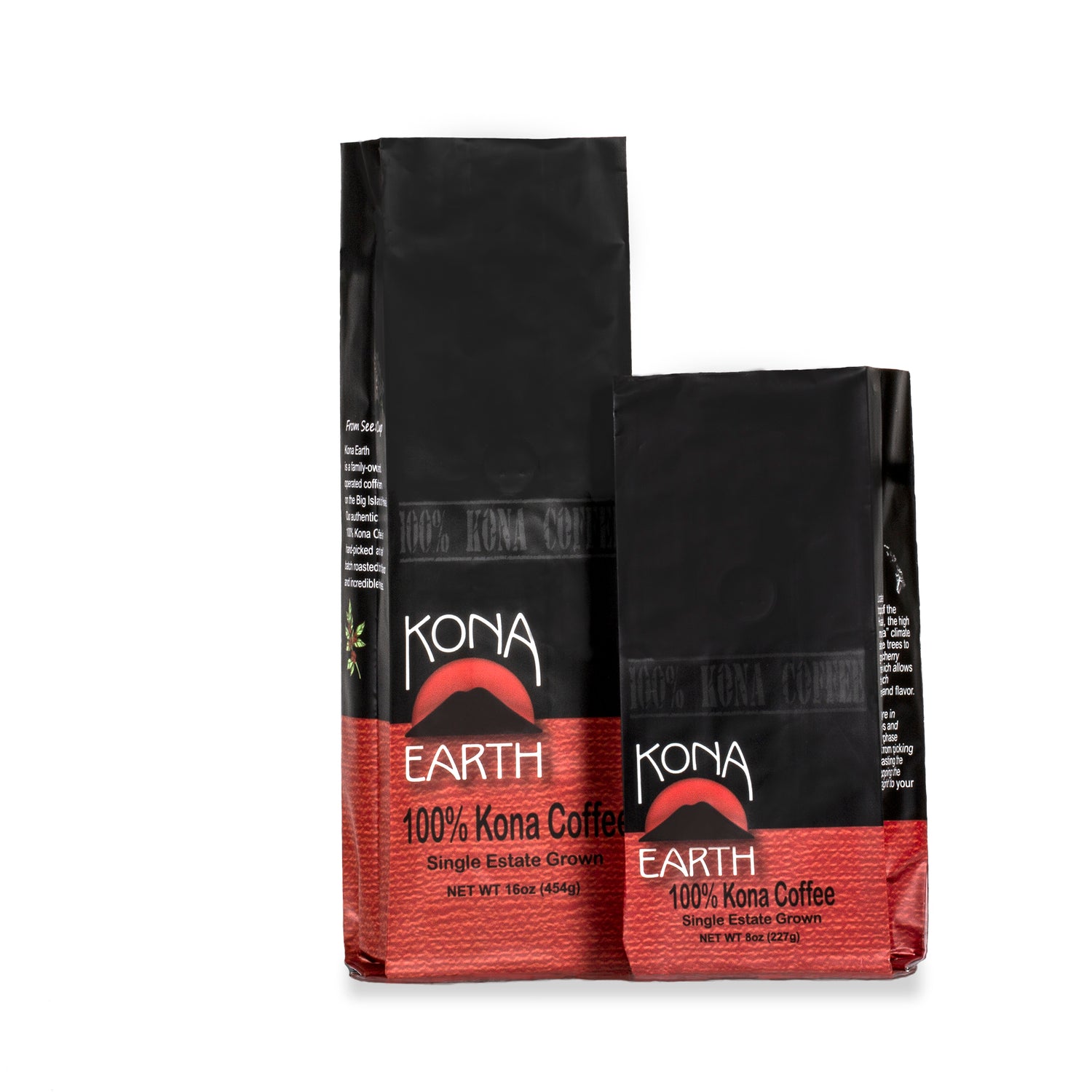What does it take to grow and deliver a superlative, 100% Kona coffee? Read on to learn 5 key steps in the coffee production process.

#1: Kona Coffee Farming: A Labor of Love
Coffee farming is equal parts nature and nurture, science and art. It requires patience, dedication, and consistency throughout the year, tending to the needs of each tree. A coffee farmer learns to “read the leaves” to gauge the health of the trees and monitors the soil with testing to see what nutrients might need a boost.
What keeps us up at night (besides the Coqui frogs)? Here in Kona, we have two primary threats to contain; CBB (Coffee Berry Borer), a tiny beetle that bores into the fruit, and CLR (Coffee Leaf Rust), a fungus that can infect and destroy the entire farm. CLR has plagued farms in other coffee-producing regions around the world for years. Hawaii had never experienced it until recently. Hawaii Department of Agriculture is taking great pains to manage it, and supports farmers with subsidies for the products needed to contain it.

For Kona coffee farmers, the reward for all of the farm management comes when they see their farm covered in snow. “Kona snow” is what we call the lovely, small white flowers that are the first signs on the trees of the coffee fruit, called “cherry”. In addition to being very pretty, the little blossoms smell divine – a cross between jasmine and orange blossom. Here in the Kona coffee belt, this “blanket of white” is a welcome sign, boding well for a fruitful, future harvest.

#2: Kona Coffee is Hand-picked
A few months later, cherry fruit starts to develop on the trees. It first appears green in color, then yellow, then finally, a deep, lush red. This dark, ruby color indicates it is ripe for picking.

Unlike large, mechanized farms in other regions, Kona coffee cherry is hand-picked over multiple rounds during each harvest season. One of the few gourmet coffees grown in the United States, farmworkers in Kona are paid a living wage. The current going rate is about one dollar per pound and a good picker can pick up to 400 pounds in a single day.

Since the Kona Earth Coffee farm is at a higher elevation (2000 feet), our harvest begins and ends a bit later than lower elevation farms. The benefit to this later harvest is that the fruit matures more slowly, contributing to a larger bean size with a rich, robust flavor. At Kona Earth, multiple rounds of picking occur between September and March.
#3: Kona Coffee is Pulped
After picking, the coffee cherry is run through a machine to separate the skin and fruit from the seed, or coffee bean, inside. This employs special machinery called a pulper and demucilager.

After the outer skin is removed, the beans enter a rotating drum that separates the successfully skinned beans from the rejects. At this point, the bean is still encased with a slippery layer called the mucilage. With the use of an auger, the bean is transported into the demucilager that cleans the bean and ejects it into a large container.

At Kona Earth, we compost the skins and use it fertilize the fields, so there is very little waste.
#4: Rake, Test, Repeat
Next, the wet beans are laid out on a large drying deck and raked every few hours to keep air circulating as they dry. The patterns of the raked coffee resemble zen gardens and can have a meditative effect on the farmer.

Each day, a grain moisture meter is used to determine the moisture level of the bean. Coffee must register between 9% and 12% moisture to qualify as a Kona specialty coffee, so monitoring this throughout the drying process is critical. Special, commercial coffee dryers are used when the quantity overwhelms the space on the drying deck, but we employ sun-drying as much as possible to save energy. Just like Goldilocks, Kona coffee can’t be too wet or too dry, it has to be just right.
#5: Dry-mill, Sort, and Grade
The dried bean still has a thin, outer parchment layer which must be removed before roasting. This is achieved through a process called dry-milling which employs more specialized equipment. This is also when the coffee is sorted and graded according to size and bean quality. Beans that qualify as top grades of Kona coffee are sold to customers as specialty coffee; peaberry, extra fancy, and estate-grade coffees. The green coffee is then stored in large burlap sacks and kept in a climate controlled room for preservation.

These five essential steps take Kona Earth coffee from “snow” to high-quality, lovingly-grown, green beans ready for roasting. Kona coffee farming is a labor of love that delivers a delicious payoff. 100% Kona Coffee, grown 100% in the USA, is one of the finest specialty coffees on the planet.



1 comment
Hi konaearth.com owner, Your posts are always well written and informative.